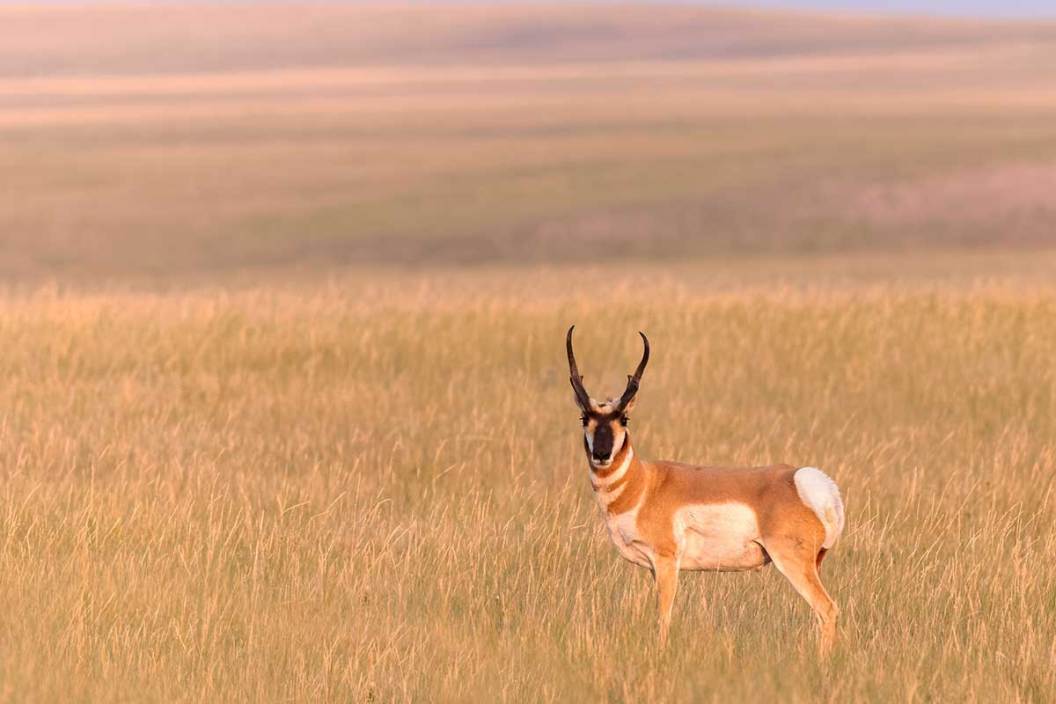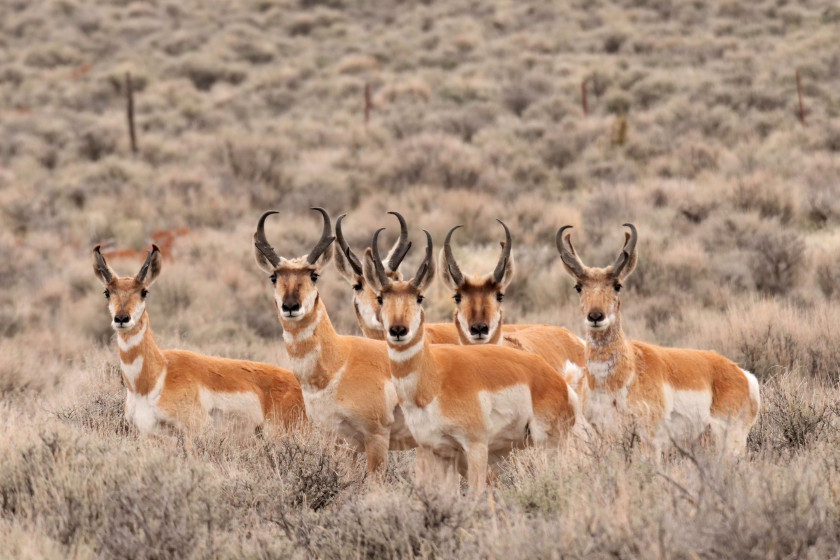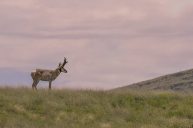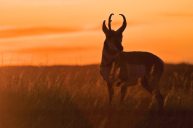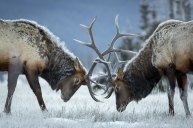Hunting pronghorn is one of the most idyllic big game hunts you can do west of the Mississippi River. A species unique to North America, pronghorn were the prey of choice for the now-extinct American cheetah. Pronghorn evolved their fast speeds and incredible eyesight as survival mechanisms against such a quick and stealthy predator. In modern times, they use these skills to evade humans. The pronghorn living in the rolling sagebrush of Wyoming today are no exception.
With large populations and big bucks all over the state, hunting pronghorn in Wyoming is something that big game hunters have on their bucket list. The Wyoming Game and Fish website advertises that there's "more antelope in Wyoming than the rest of the continent, and harvest success regularly exceeds 85 percent." If you're lucky enough to draw a pronghorn tag in this state, here are a few tips for scouting for pronghorn.
Know What You're Looking For
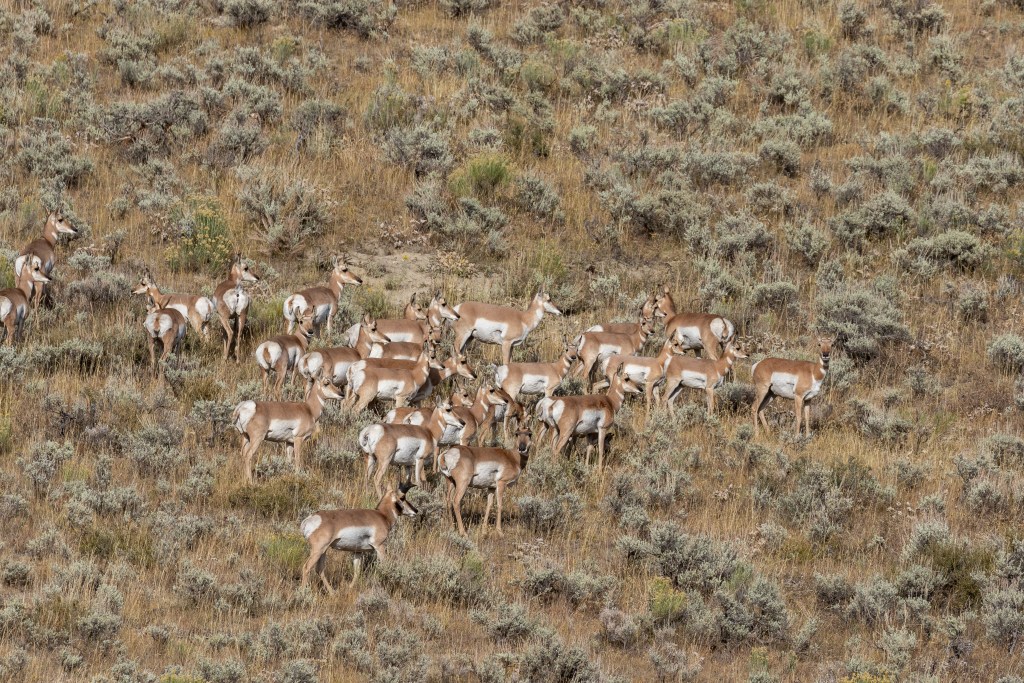
It's essential to know how to identify your target species in the field before pulling the trigger. You can avoid making identification mistakes, or failing to detect your target species, by training your eyes to recognize pronghorn shapes and colors, especially when the animals are far away. Pronghorn are surprisingly small critters for being big game animals. Their coats are distinct and feature contrasting white, black, and orange colors. Bucks have long horns that fork at the top, and does can have horns, too. Pronghorn horns look entirely different from whitetail or mule deer antlers. Their rumps are fluffy and white, a noticeable detail when picking out a herd of them on an open hillside. If you see dozens of white circles of the same size and shape in the sage, you've likely spotted a herd of pronghorn.
Scout Early and Introduce Yourself to Landowners
If you want to pronghorn hunt in Wyoming, it's never too early to start scouting. Depending on which hunting season you apply for, you can begin scouting in August and continue through the beginning of winter. Where you see pronghorn now is likely where they'll be next year, too. Mark where you see bucks, does, watering holes, and fresh sign on a map app, and start building a database of pronghorn spots.
Getting a leg up on your scouting season can even give you a shot at accessing private land. No landowner wants to answer a knock at their front door the night before the pronghorn season opens and see an eager hunter they've never met ask for access to their property. Giving folks at least a few weeks advance, if not a full year, about your interest in hunting their property is courteous and considerate. It's polite to do, and landowners appreciate your foresight and thoughtfulness, even if they don't grant you access to your property.
Pack Up Your Scouting Gear

Don't forget to pack your scouting gear when you head out looking for pronghorn. Binoculars or a spotting scope will be game-changers when looking for pronghorn over miles of country. If you want to get after it, consider bringing a blind or decoy and posting up for an entire day over a popular watering hole or feeding area with your spotting scope. That way, you can pick out legal animals from a long distance away without being detected, increasing your time observing these one-of-a-kind critters.
Additionally, Wyoming can be hot and dry, especially before archery season opens. Bring snacks, extra water, and sun protection—such as sunscreen, hats, and long sleeves—plus any other items you should stick in your pack before looking for pronghorn.
Put Your Tires and Hiking Boots to Work

I've found that the best way to scout for pronghorn is by putting miles on your car and under your boots. Wyoming's sage country is incredibly vast. Hunters can narrow their hunting spots by driving public roads in search of pronghorn and marking where they see them on the map. Once you find a herd of pronghorn, put the truck in park and lace up your hiking boots. Walking the terrain you'll be hunting will only increase your awareness about what's on that landscape. You might stumble across a cattle water tank, a grassy meadow full of feed, bedding areas, places with fresh sign, and more just by getting out of the car and looking around. Often, pronghorn like to hide just out of sight of the road. Locating pockets of habitat that aren't as visible to lazier hunters will increase your chances of filling your tag.
When you're scouting, identify limiting resources and seek them out. Was it an arid summer, and water was scarce? Or did it just snow, and now some feeding areas are no longer accessible, forcing pronghorn to search for food in areas with less snow? Finding limiting resources is another good way to narrow down where to hunt when you're feeling overwhelmed by Wyoming's endless sage country.
If you're thinking about hunting pronghorn in Wyoming next year, it's never too early to start planning your hunt. The time you spend scouting now will increase your chances of success later, which is something worth celebrating with a hunk of pronghorn steak.
